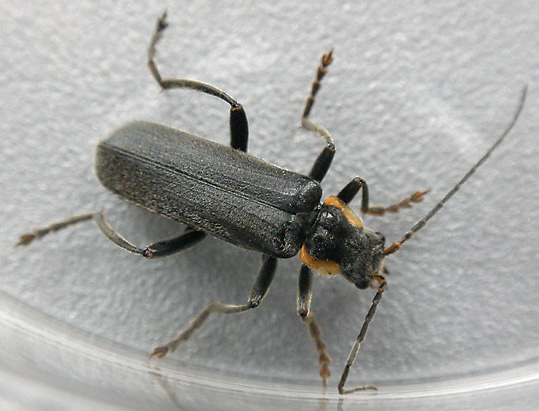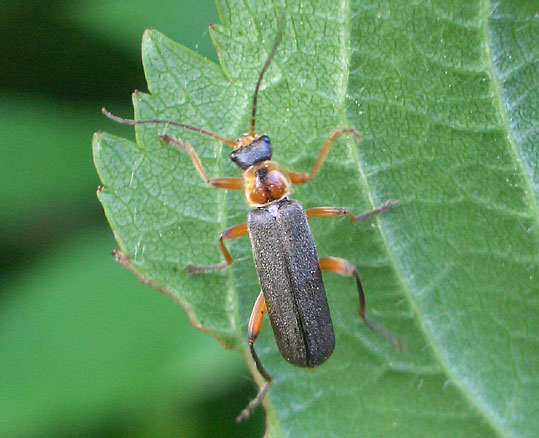
Home > Phylum selection > Arthropoda > Coleoptera > Cantharidae
Home How to cite this site Terms & conditions Disclaimer Contact Site tutorial / Help Links |
Cantharidae: General information Weichkäfer, Soldatenkäfer |
|
The Cantharidae are long and slender
beetles (see Fig. 1 below). They are distributed worldwide with more
than 6000 species (list of German species see here). Most species have a soft, chitin-poor
exoskeleton which is especially evident from the soft elytra. Many
species have fine hairs on the surface of the elytra and the
distribution and length of these hairs are then important characters
for species identification. The size of the German species varies
between almost 2 cm to less than 2 mm. There is a trend in the smaller
species to have shortened elytra.
The Cantharidae have a large food spectrum ranging from plants to other insects. The imagines of many species are frequently found on flowers where they eat petals and pollen, but also hunt other flower-visiting arthropods. Some species are beneficial insects because they eat plant lice and other plant-eating pest insects, while other species are themselves plant pests, because they feed on buds and young shoots. Most species hunt insects including other cantharids. The larvae of most species are ground living and are carnivorous hunting for arthropods, earth worms and gastropods. Only the larvae of the genera Malthinus and Malthodes live in rotting wood. The females of most species deposit their eggs into moist soil. The first and sometimes the second larval instars have reduced appendages and therefore are largely immotile. Later larval instars are long and soft with well developed locomotory legs and mostly are covered with velvety black hairs. The older larvae overwinter under stones, moss or leaf litter. and are extraordinarily cold-resistant. On warm winter days they can be found crawling on the snow which earned them their name as "winterworms" or "snow-worms". The larvae pupate in the soil in early Spring and the imago ecloses in late Spring. The imagines can then be found throughout the Summer and Fall. The Cantharidae belong to the superfamily Cantharoidea that also contains the Lycidae, Omalisidae, Lampyridae and Drilidae. The latter seem to be the sister group of the Cantharidae. |
|
| This page has been
updated on February 3, 2010 This site is online since May 31, 2005 Copyright © by Nikola-Michael Prpic. All rights reserved. |
Related information: Species list References |


